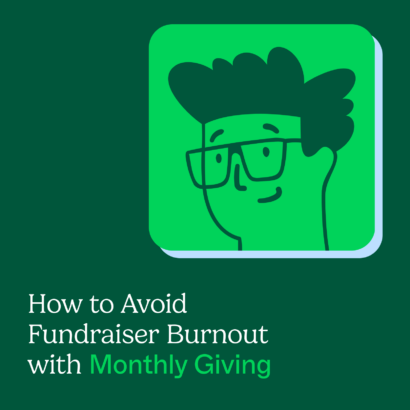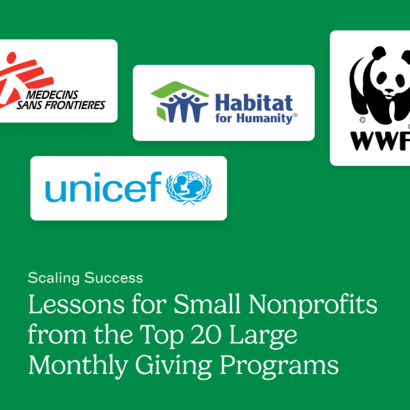What we are learning through COVID-19 is that the impacts of this pandemic range depending on race, gender, location and industry. While some donors may have the ability to maintain giving levels, others may not have the same financial comforts to do so at this time. What some have even found is that at the onset of the crisis, folks were willing to chip in—to give more or volunteer in direct response to needs that were apparent as the pandemic grew throughout the country. Now, however, this continued need for financial resources and assistance has outpaced what many are able to give anymore.
And, if your donors aren’t giving at this time, what does that mean for your nonprofit? How can you, at the very least, develop solid retention plans to mitigate as much as you can?
How to retain donors during a crisis
Donor retention during times of distress is very similar to donor retention during times of unrest. We want to express gratitude immediately and provide personal follow-ups and outreach. This year, however, nonprofits have realized they need to prepare plans for doing so when physical contact or on-location options aren’t available.
In times of crisis, step up your donor retention by giving extra support and consideration.
Be readily available.
Respond to emails, voicemails and social media inquiries or comments in as much real-time as possible. It’s equally important to ensure your digital channels, signature lines and websites are all updated with the latest contact information, hours and expectations for returned messages. If your team is working remotely, and thus has slower response times, for example, note that in all areas where donors may look for you.
Check in regularly.
Your normal donor meetings and phone calls may look a bit different, but they are still important during this time. Think outside the box by inviting donors to quick, 15-minute Zoom calls, sending a personalized video link, or connecting over a virtual lunch or coffee meeting.
Think long-term.
Why did your donors start to give in the first place? It’s likely that those reasons have not changed, but their financial circumstances may have. In that case, keep nurturing those donors and provide them with other opportunities to get involved—volunteers, committee members, smaller giving levels. Continuing to work through touchpoints during the year(s) is a long-term strategy and one that is important
Preparing for the future
This new normal that we’re all living in is here to stay. That said, think of how you will continue to engage with donors even after the effects of COVID-19 have waned. Set up new communication and engagement strategies that will work during any time of crisis. This can include:
Using video to connect with donors on your website and through email marketing.
Uploading videos that address FAQs, highlight the good work you’re doing or showcase behind-the-scenes looks give personality to your organization and keep the ‘face’ of everyone front and center.
Inviting donors new and old to connect with you on social media.
Encourage them to visit those channels often for the latest information and news (especially when you can’t be together in person).
Hosting regular virtual town halls or Q&A sessions online.
This can be done using a variety of tools, but schedule them on a regular basis (quarterly, for example). The bonus in doing this is that even if there isn’t a crisis, per say, you could potentially gain attendance at these virtual meetings as it makes them easier to fit into schedules (takes out the commute factor for everyone).
While many are experiencing a longer ‘sales cycle’ during this time, it’s critical to continue to nurture your donor relationships and build new connections. Take time to evaluate what has worked (and what hasn’t) up through this point. What have you learned? What could you do better? What do your donors need? Start with those questions to build your donor retention plan. Doing so will help you prepare for unforeseen circumstances going forward.



